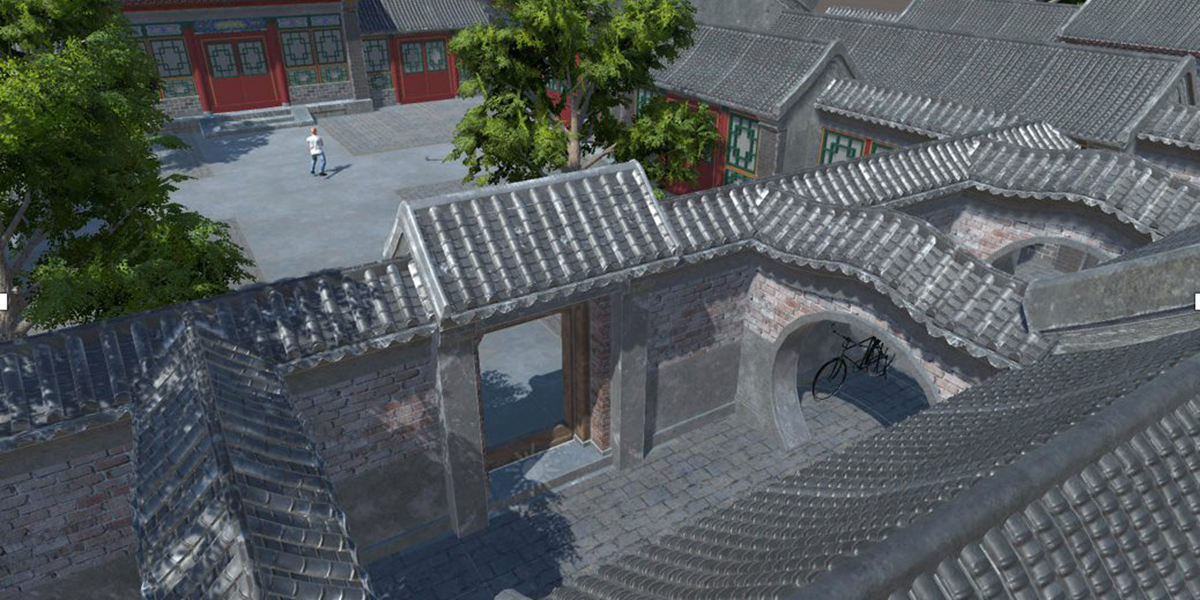
San Francisco State University Professor of Cinema Weimin Zhang grew up in the hutongs of Beijing, old neighborhoods defined by narrow alleyways and courtyards, considered by many to be the heart and the soul of the city. Some of the structures date back to the 13th century, but as the city undergoes a building boom, the old neighborhoods are disappearing. In an effort to preserve the culture, Zhang created an interactive virtual reality (VR) film, Hutong In Live, which was screened in March at Cinequest, a Silicon Valley independent film festival that combines art and technology.
The film, Zhang’s first attempt at VR, combines interactive VR, 360 video and voiceover narration with a 3D recreation of the neighborhoods for an immersive experience. When viewers put on VR headsets, they can explore the narrow streets and courtyards, listen to the sounds of neighbors chatting and interact with different characters.
“There are people playing Chinese chess. There’s an old man sitting in the courtyard listening to the radio, and there are children jumping rope,” Zhang said. “With the gradual disappearance of the hutongs, future generations will have no way of knowing the older traditions. This is my way of preserving those memories.”
The film doesn’t hide the fact that the city is changing — shots of bulldozers show ruins of old hutongs as new construction gets underway. The social connections people formed after sharing a courtyard for generations are being lost, Zhang says, and as people move into new high-rise apartments they’re more isolated.
“In the hutongs we interact with each other. We help each other,” she said. “As a kid, the hutong is your playground. Once you step out of your door there are kids all around you. You don’t need to arrange a play date.”
When Zhang set out to work on the project she didn’t have any specialized VR equipment, so she improvised. Using six cameras, she created a VR rig to film scenes in Beijing. Once she was back in the U.S., graduate students in the SF State School of Cinema helped her stitch together footage from the six cameras to create a 360-degree effect. Zhang also collaborated with students in an animation class to design the film’s first courtyard. When the class ended, Zhang turned the project over to her former college classmate who also grew up in Beijing and now works in game development in the Bay Area, and he built out the rest of the virtual world.
This isn’t the first VR production to come out of SF State. Yumeng Du was the first graduate student in the School of Cinema to shoot her thesis film in 360 video. She graduated in 2017, and her film, Everything Flows, just screened at SXSW.
Pending University approval, students from any major will have a chance to try their hand at creating VR content. Broadcast and Electronic Communication Arts Associate Professor Dina Ibrahim proposed a course called “Immersive Video Production,” which would explore 360 video and other VR storytelling techniques. It could be available as soon as the fall.
“Virtual reality is the perfect interdisciplinary intersection. It’s where students from the creative arts to computer science to business can come together and collaborate on a project,” Ibrahim said. “It’s a very promising field for media production.”
SF State is an institutional member of Virtual Reality/Augmented Reality Association (VR/AR Association), which provides resources for the VR creative community.
— Jamie Oppenheim